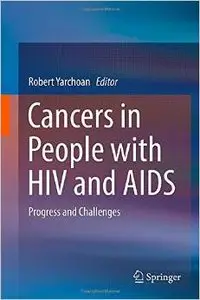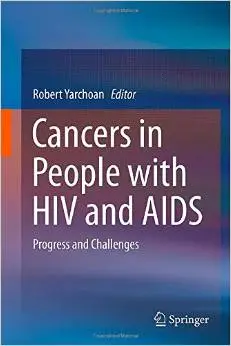Cancers in People with HIV and AIDS: Progress and Challenges By Robert Yarchoan
2014 | 408 Pages | ISBN: 1493908588 | PDF | 5 MB
2014 | 408 Pages | ISBN: 1493908588 | PDF | 5 MB
The association between AIDS and cancer was recognized from the beginning of the AIDS epidemic, when the appearance of Kaposi sarcoma in a cluster of young men was one of the first signs of this new disease. It was soon recognized that AIDS was caused by infection with a novel virus (HIV) and that AIDS patients are prone to develop a number of "AIDS-defining" cancers: Kaposi sarcoma, lymphoma, and cervical cancer. The development of effective combination anti-HIV therapy starting around 1996 converted AIDS from a death sentence to a manageable disease and led to dramatic shifts in the epidemic. As this therapy was able to improve immune function in patients, the incidence of most "AIDS-defining" cancers decreased. There is a misconception, however, that AIDS has gone away. In fact, as AIDS patients are living longer, the number of AIDS patients has more than doubled in the United States since 1996, and the AIDS population overall has increased in age. Also, as AIDS patients are less likely to die of other complications, cancer is coming to the forefront as one of the most common causes of death in regions where AIDS drugs are widely available. Moreover, the three "AIDS-defining" cancers are now taking a back seat to a number of other HIV-associated cancers, such as Hodgkin lymphoma, lung cancer, and anal cancer. In the developing world, AIDS-associated cancers are a major public health problem, and in some regions of sub-Saharan Africa, Kaposi sarcoma is the most common tumor in men. In recent years, there has been a vast increase in our understanding of HIV-associated cancers. We now know, for example, that most are caused by other viruses and that the main role of HIV and immunodeficiency is to provide a supportive environment for the viruses to multiply and for the cancers to develop. But there remain a number of unanswered questions and a need for improved prevention and therapy. In the 28 chapters of this book, written by some of the most renowned experts in this field, we present up-to-date information on the cancers associated with HIV infection. The chapters cover the epidemiology of these cancers, their pathogenesis, their clinical presentation, and their treatment. The book will be of value to physicians, other medical professionals, students, and researchers with an interest in AIDS, viral-associated cancers, or HIV-associated malignancies.



